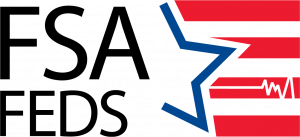Everyone is looking for ways to cut costs. Employers can help by giving employees benefits that deliver real value.
The Federal Flexible Spending Account Program (FSAFEDS), administered by HealthEquity, Inc., gives federal employees an important tool for saving money on out-of-pocket medical and day care expenses.
FSAFEDS provides three account options to support the needs of employees and their families. All three work by automatically deducting money from each paycheck — before payroll taxes —and putting it into an account. Employees then use the funds in the account throughout the plan year to pay for eligible healthcare or dependent care expenses.
With FSAFEDS, employees can save up to 30 percent* on these expenses because the money is deducted automatically from your paycheck before taxes are taken out. The opportunity to carry over funds left in the account at the end of the year lessens the pressure to “use or lose.”
Each type of FSA account covers different care needs.
- Health Care FSA (HCFSA) This is a pre-tax benefit account that is used to pay for eligible medical, dental, and vision care expenses not covered by your insurance plan or elsewhere. It is a smart, simple way to save money while keeping you and your family healthy and protected. In 2023, you can set aside as much as $3,050 in this account. And if you don’t use it all on this year’s expenses, you can carry over up to $610 from one plan year to the next if you re-enroll.
- Limited Expense Health Care FSA (LEX HCFSA) — If you are enrolled in an HSA-qualified high-deductible health plan and have a Health Savings Account (HSA), you can maximize your savings even more with a Limited Expense Health Care FSA (LEX HCFSA). This pre-tax benefit account helps you save on eligible out-of-pocket dental and vision expenses while taking advantage of the long-term savings power of an HSA. In 2023, you can put up to $3,050 in this account, plus, if you don’t use it all this year, you can carry over up to $610 to next year if you re-enroll.
- Dependent Care FSA (DCFSA) — Like the other two accounts, this is a pre-tax benefit account, but it’s used to pay for eligible dependent care services, such as preschool, summer day camp, before or after school programs, and child or adult daycare. It helps you save money while taking care of your loved ones so you can continue to work. For 2023, you can put up to $2,500 in this account for an individual, or $5,000 for a household. Money left in the dependent care account at the end of the year can’t be carried over, but a grace period allows it to be used for expenses incurred before March 15, 2024.
With FSAFEDS, eligible employees of participating government agencies can use their accounts to pay for:
- Doctor visits, prescription drugs, surgery, massage therapy, glasses and contacts, menstrual care products, masks, hand sanitizing wipes (with 60%+ alcohol base), and other qualified expenses with a HCFSA
- Private sitters, child day care, adult day care, preschool, nanny services and other qualified expenses with a DCFSA
And those in an HSA-qualified high-deductible health plan can use the LEX HCFSA for eligible dental and vision expenses that are not paid or reimbursed by an insurance plan.
FSAFEDS programs provide tax savings for both participating agencies and their employees. With those savings for a variety of types of care, FSAFEDS gives agencies a way to help their employees address rising costs — now and in the future.
Employees can enroll in FSAFEDS during the annual Federal Benefits Open Season from November 14 through December 12, 2022, midnight EST. Participants must re-enroll each year to continue utilizing the FSAFEDS program. Visit FSAFEDS.com to learn more and enroll.
*Assumes a combined tax rate of 30% including FICA, state, and federal income taxes. Actual amounts may vary.






Leave a Reply
You must be logged in to post a comment.